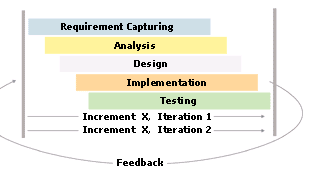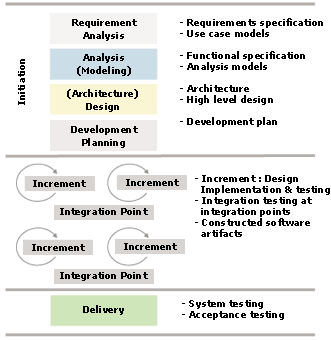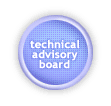Request A Free Proposal
- HOME >
- Solutions >
- Solutions Process
Development Method At SynapseIndia
MethodologySynapseIndia has an in-house methodology, which is based upon the industry standard Rational Unified Process. It provides for all major workflows in a project including requirements capture, analysis, design,implementation,and testing. The documentation of analysis and design work would be done using UML (Unified Modeling Language).SynapseIndia's consultants are proficient in the use of UML based leading industry tools like Rational Rose and Enterprise Architect.

The major phases of project lifecycle are described in the following table:
Phase |
Description |
| Requirement Analysis |
|
| Analysis & Design |
|
| Implementation |
|
| Testing |
|
| Deployment |
|
Process Description
Following Figure shows the process model with all the phases.

1. Purpose
The purpose of this phase is to collect and record requirements.It includes use case diagrams as per the UML.
2. Activities
During this phase, the following information is collected and recorded.
- Decompose use cases into abstract services.
- Operational constraints (performance, projected usage etc.)
- Nature of changes that are likely to occur
- User wish-lists that may require future consideration
- Any other
Usual techniques of requirements collection via workshops and interviews may be used for this.
3. Deliverables
- Use case model, consisting of a set of use case diagrams.
- Requirements document listing operational constraints,nature of changes likely to occur, user wish-lists etc.
Analysis Modeling
1. Purpose
The purpose of this phase is to analyse the requirements and identify analysis models, and functional specification.These models help in understanding the requirements.
2. Activities
During this phase, the collected requirements will be analysed to identify the following:
- Core domain classes and static associations between these classes (based on analysis of requirements and the domain).
- Sequence diagrams to narrate core use cases.
- State diagrams, if required, for domain entity classes
- Activity diagrams, if required.
3. Deliverables
Analysis models (class diagrams, sequence diagrams, state diagrams, and activity diagrams), and functional specification document.
Architecture DesignOur trial process involves a series of reality checks with state-of-the-art tools to improve the productivity and effectiveness of the hardware and software being tested. Specially designed quality checks on individual components of the system, as well as on the integrated system ensure a high performance of the product. This is completed by on-line beta testing. We host it on our servers with a temporary URL or Domain and ask the client for their feedback. This is usually through an interactive Internet chat. Hosting on a temporary URL is maintained till the project is completed and the client approves the web site for handover.
1. Purpose
The purpose of this phase is to design a structure for the software that includes the various subsystems, and their interrelationships. This drives the various increments and iterations.
2. Activities
The typical activities to be conducted during this phase include
- Decompose use cases into abstract services.
- Identify subsystems or components to provide the above services.
- Identify infrastructure subsystems or components.
- Identify other structural aspects, such as processes,distribution, communication, etc.
- Identify common frameworks, layers, and components for internal as well as external reuse.
- Identify tools, technologies etc. If the tools have already been identified, the choice may be reevaluated at this stage if necessary.
- Conduct a technical risk analysis to identify the technical unknowns and assumptions
3. Deliverables
Architecture of the software with logical and deployment views. To maintain integrity, the architecture designed in this phase has the following characteristics:
- Realize all the identified use cases.
- Allow scope for changes to requirements.
- Pose constraints against changes that violate the architecture.
- Absorb future risks. This requires application of design patterns, components, reflection etc. in building the architecture.
1. Purpose
The purpose of this phase is to plan for iterative and incremental development of the software.
2. Activities
The activities include the following:
- Analyse the architecture to identify candidates for increments. This activity should also consider the risk factors and plan for the risky increments to be started early.
- Identify independent and infrastructure increments.Such increments create the infrastructure for the rest of the software.
- Identify dependent and use-case increments. Dependent increments rely on the infrastructure created by the independent increments.
- Identify integration points. This is based on the dependencies.
- Decide milestones, and teaming. This is driven by the technical requirements and size of each increment.
3. Deliverables
- Detailed project schedule with activities, teaming, milestones for various increments (with further iterations if necessary), and integration points.
- Integration test planning (integration points, test cases, etc).
1. Purpose
- To construct the increments (over multiple iterations if necessary).
- To perform integrations and integration testing at the integration points.
2. Activities
The following activities are applicable for each increment.
- Detailed design
- Implementation
- Preparation of unit test cases
- Unit testing
- Integration testing if there is an integration point at the end of the increment.
- Risk analysis.
3. Deliverables
Constructed and tested subsystems or components.
1. Purpose
To conduct system and acceptance testing and deliver the software.
2. Activities
The activities as described in the current QMS are applicable here.
3. Deliverables
The deliverables as described in the current QMS are applicable here.
The Vendor would deliver to the Client, outputs of select phases, which would be termed as deliverables. The project deliverables as described in the current QMS are:
- First Level Project Plan
- Requirement Analysis Report
- Final Project Plan
- Analysis Model
- Design Model
- Test Model
- Implementation model
- Documented Source Code.









